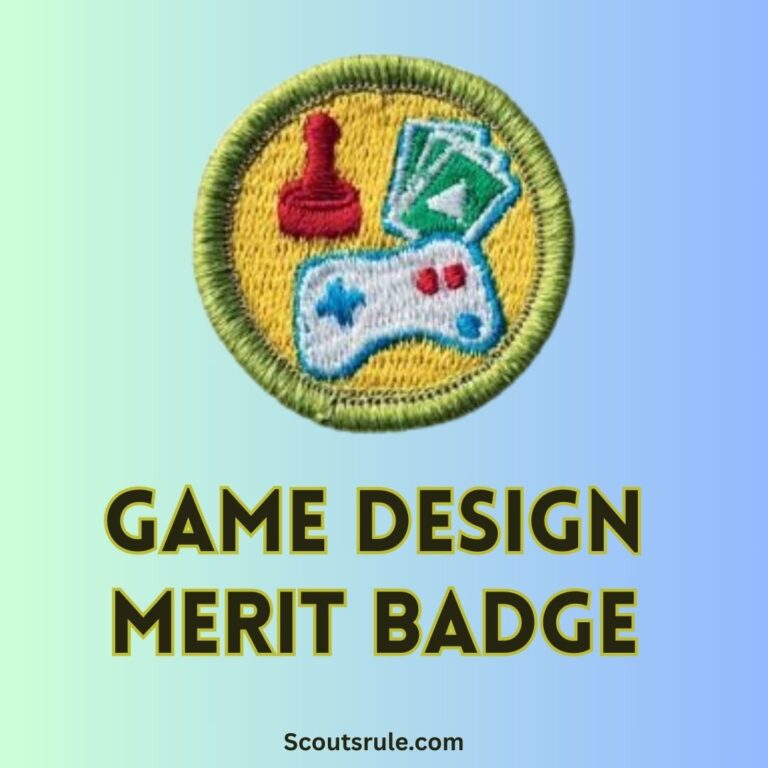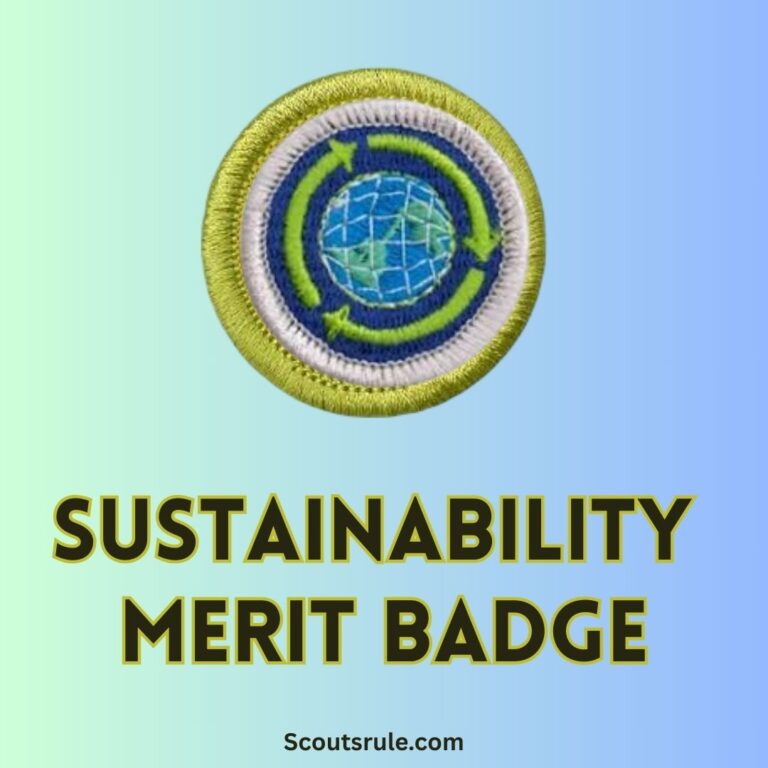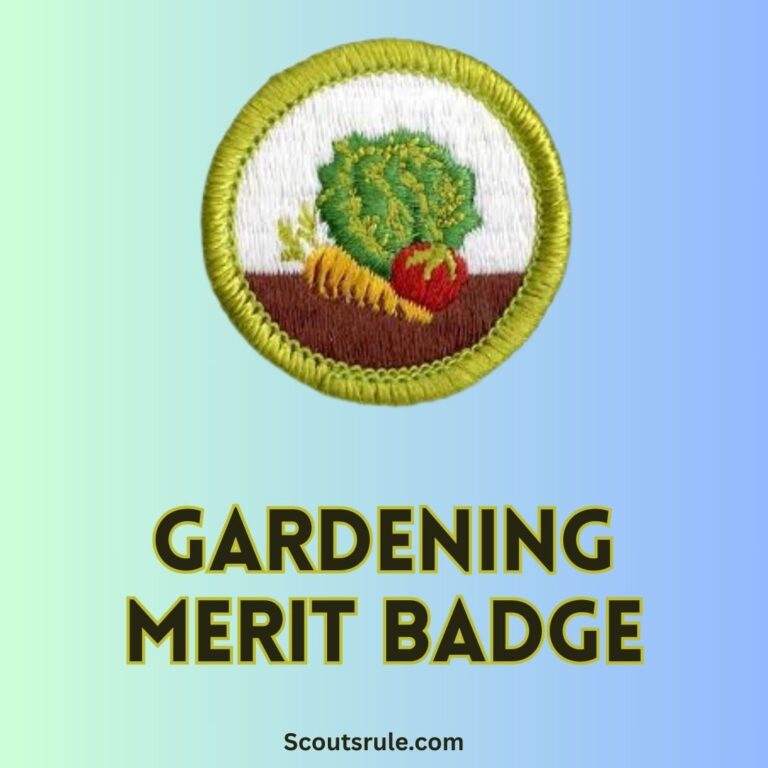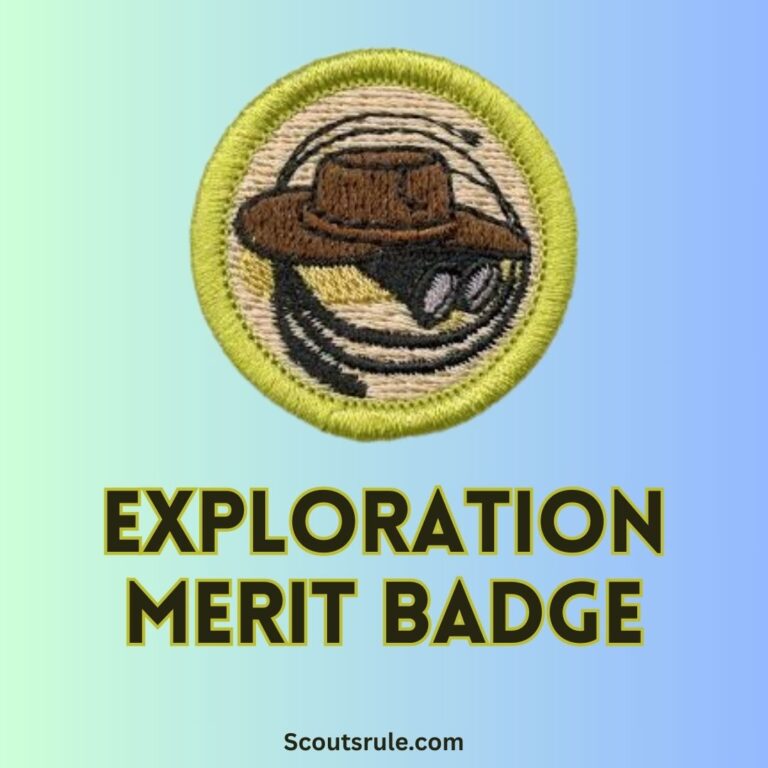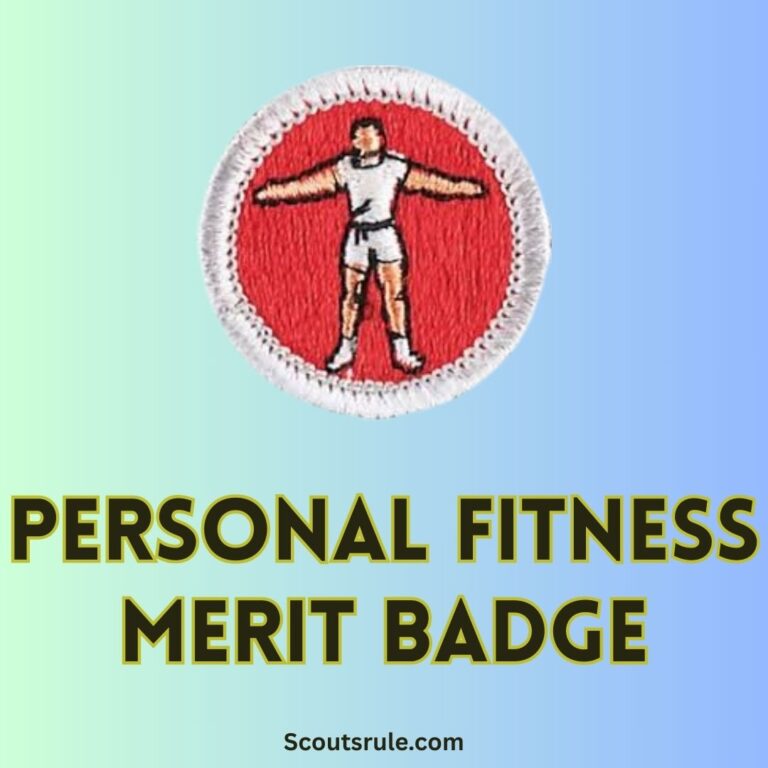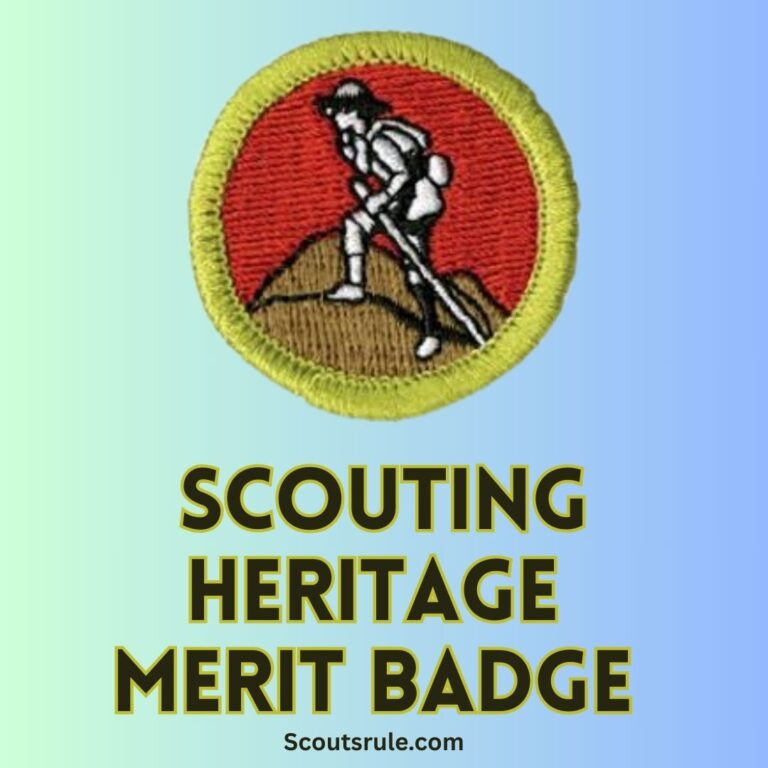
Effective communication is one of the most essential skills a person can develop. In Scouting, the Communication Merit Badge is designed to help you reflect on how you send and receive messages, build your public speaking skills, and improve your interpersonal relationships. This guide covers everything you need—from understanding your daily communication habits to engaging in group discussions—and provides practical projects and self‑reflection strategies that will enable you to complete the badge’s requirements confidently.
Post Contents
- 1. Overview of the Communication Merit Badge
- 2. Understanding and Enhancing Your Communication Skills
- 3. Strategies for Self‑Improvement in Communication
- 4. Practical Projects and Examples
- 5. Evaluating Your Communication Performance
- 6. Overcoming Challenges in Communication
- 7. Continuing Communication Learning Beyond the Badge
- 8. Tips for Success in Communication Merit Badge Projects
- 9. Final Thoughts
- Short Conclusion
1. Overview of the Communication Merit Badge
The Communication Merit Badge helps you explore various methods of communication, develop your skills in sharing ideas, and learn how to listen effectively. The requirements are designed to have you examine your personal communication habits and reflect on what makes your interactions effective. Here is a breakdown of the possible approaches:
Requirement Options
- Option A – Communication Log:
For one day, keep a detailed log of your communication activities. Record every instance of communicating, whether it’s talking with friends, listening to a teacher, interacting on social media, or reading print media. Include the time, method, and context of each interaction. Once the log is complete, discuss with your merit badge counselor what patterns you noticed, how much time you spent on different communication activities, and how these patterns affect your day-to‑day life. - Option B – Listening Journal:
For three consecutive days, keep a journal solely devoted to listening. Note down specific examples when you listened to obtain information, when you were persuaded, when you appreciated or enjoyed something, and when you truly understood someone’s feelings. This requirement emphasizes that listening is as vital as speaking. In your journal, reflect on which type of listening was most challenging and how you might improve your ability to receive messages effectively. - Option C – Group Discussion:
In a small‑group setting (with fellow Scouts or friends), have a session where each participant shares a personal story about an event or experience. During this discussion, observe and note how each member communicates, including their tone, body language, and choice of words. After the discussion, prepare a report for your counselor outlining what you observed and what made the most effective communication stand out. Discuss any differences in how emotions or significant events were conveyed and how active listening contributed to the conversation. - Option D – Alternative Activity (if applicable):
Some councils may allow you to choose a different communication project, such as preparing and delivering a speech, conducting an interview, or organizing an event where communication plays a central role. Check with your counselor to see if an alternative activity is available, and if so, carefully follow the guidelines provided.
By selecting one of these project options, you will demonstrate your understanding of both the art and science behind communication. Remember, your work should reflect your personal style, so always express your observations and conclusions in your own words.
2. Understanding and Enhancing Your Communication Skills
Communication encompasses various forms, including verbal, non‑verbal, and written expression. Let’s explore these concepts further:
2(a) Verbal Communication
Verbal communication includes everything you say—from casual conversation to formal presentations. Effective verbal communication is clear, concise, and uses an appropriate tone and pace. Consider these tips:
- Clarity: Speak clearly and enunciate your words. Avoid mumbling or speaking too quickly.
- Structure: Organize your thoughts logically. For formal speeches or presentations, having a clear introduction, body, and conclusion is essential.
- Engagement: Maintain eye contact, use natural gestures, and vary your tone to keep your audience interested.
2(b) Non‑Verbal Communication
Non‑verbal cues, such as facial expressions, body language, and eye contact, often convey more meaning than words. For example:
- Facial Expressions: Smiling can make your message more welcoming.
- Body Language: Open postures suggest confidence and invite engagement.
- Gestures: Appropriate hand gestures add emphasis to your words, but over‑doing them can distract from your message.
2(c) Written Communication
Whether you’re writing an email, letter, or journal entry, the principles of clear written communication are similar to those of speaking:
- Conciseness: Get to your point quickly without unnecessary filler.
- Grammar and Punctuation: Proper punctuation and clear sentence structure prevent misunderstanding.
- Tone: Match your tone to your audience. A casual tone might be appropriate for a personal journal, while a more formal tone is needed for an official document.
2(d) Digital Communication
In today’s digital age, communication extends to text messaging, social media, and video conferencing. Digital communication requires:
- Clarity: Since non‑verbal cues can be lost in digital formats, choose your words carefully.
- Etiquette: Be mindful of tone and context—you don’t want to come off as insensitive or abrupt.
- Security: Respect digital privacy and avoid sharing personal or sensitive information on public platforms.
3. Strategies for Self‑Improvement in Communication
Improving your communication skills is an ongoing process. Here are several strategies that will help you along the way:
3(a) Active Listening
Active listening is a foundational skill. To practice:
- Focus Fully: Give the speaker your undivided attention. Put aside distractions like phones or other screens.
- Clarify: Ask questions if something is unclear. Paraphrase what you’ve heard to ensure that you understand correctly.
- Reflect: Consider the emotions and unstated messages behind the words. This reflection can help build empathy and deeper understanding.
3(b) Seeking Feedback
Feedback is invaluable for growth. After a public speaking exercise or group discussion:
- Ask Peers and Mentors: Request constructive criticism about your clarity, tone, and body language.
- Self-Review: If possible, record your performance and watch it later to identify areas for improvement.
- Implement Change: Apply the feedback in future communications to gradually refine your style.
3(c) Practicing Public Speaking
If you feel nervous about speaking in public, practice is key:
- Start Small: Begin by speaking to a trusted group of family members or close friends.
- Join a Club: Consider joining an organization like Toastmasters or a school debate club where you can practice speaking.
- Rehearse: Prepare and rehearse speeches ahead of time. Familiarity with your material boosts confidence and ensures smoother delivery.
3(d) Organizing Information
Effective communication often means being well-prepared:
- Structure Your Thoughts: Start with outlines or bullet points to organize your presentation or journal entries.
- Use Visual Aids: Charts, diagrams, or slides can help illustrate your points and keep the audience engaged.
- Practice Transitions: Smooth transitions between topics keep your audience engaged and help maintain flow.
4. Practical Projects and Examples
The best way to improve your communication skills is to practice them in real-life contexts. Here are some examples and ideas for each project option:
Example for Option A – Communication Log
Create a notebook or digital document and log every instance of communication for one day. Your log might include:
- Morning: Face-to-face conversation with family members over breakfast; checking social media and responding to messages.
- Afternoon: A conversation with a teacher about schoolwork; listening to a podcast while commuting.
- Evening: A discussion with friends about a movie; reading a book or article.
After you’ve compiled your log, review it to determine which methods of communication were the most effective and which were less so. Ask yourself questions such as:
- Did I listen as carefully as I spoke?
- Were there any misunderstandings that I could have avoided?
- How could I improve my digital communications compared to face-to-face interactions?
Example for Option B – Listening Journal
Over three consecutive days, focus solely on what you hear. In your journal, record instances such as:
- Obtaining Information: Listening to a news report or a lecture.
- Being Persuaded: Noting moments when someone convinced you to change a viewpoint.
- Appreciating or Enjoying Something: Reflecting on a friend’s story or an engaging podcast.
- Understanding Feelings: Paying attention to the tone and emotion when a family member talks about their day.
Discuss your observations with your counselor. You might note, “When I listened to my teacher explain a new math concept, I noticed I absorbed more information when I repeated the points mentally.” Using different examples will highlight the range of listening experiences.
Example for Option C – Group Discussion
Organize a small discussion with 3–5 peers where everyone shares a personal story about a meaningful event. Some guiding questions could be:
- What was the event?
- How did the event affect you?
- What did you learn from the experience?
As you listen to each story, note the differences in how people express emotion, emphasize details, and structure their narratives. After the session, create a report summarizing what you observed and what effective communication practices you noticed—for example, how one person used pauses effectively to let significant points resonate with the group.
Example for Option D – Alternative Communication Projects
Depending on your local council’s guidelines, you might also:
- Deliver a Prepared Speech: Write and practice a speech on a topic you are passionate about. Record it, then review it for clarity, tone, and body language.
- Conduct an Interview: Interview a leader or role model and prepare a report on how their communication style influenced their success.
- Plan a Communication Event: Organize a short meeting or demonstration that highlights good communication practices among your peers.
Each of these projects is designed to build your confidence and refine your communication skills. Choose one that resonates with you and challenge yourself to excel.
5. Evaluating Your Communication Performance
Evaluation is a key part of learning. Here are steps to ensure you grow from your experiences:
5(a) Self‑Assessment
- Review Logs and Journals: After completing your communication log or listening journal, reflect on what worked and what didn’t. Write down strengths (e.g., “I was clear and concise during my conversation with my teacher”) and areas for improvement (e.g., “I need to ask clarification questions more frequently”).
- Analyze Patterns: If you notice you spend a lot of time on digital communication but very little face‑to‑face, consider ways to balance your interaction types.
5(b) Feedback from Others
- Peer and Mentor Feedback: After a public speaking event or group discussion, ask others for honest feedback. Encourage them to comment on your clarity, engagement, and listening skills.
- Counselor Reviews: Use your merit badge counselor as a resource. They can help you evaluate your performance against the badge requirements and offer suggestions for improvement.
5(c) Ongoing Improvement
- Set Goals: Based on your evaluations, set small, achievable goals for your communication skills. For instance, decide to incorporate more pauses in your speech or to make eye contact during conversations.
- Track Progress: Over time, keep a separate log that monitors improvements in your communication style. This ongoing effort will not only help you earn the merit badge but will also serve you well in many areas of life.
6. Overcoming Challenges in Communication
Like any skill, communication can come with obstacles. Here are some common challenges and ideas on how to overcome them:
6(a) Stage Fright and Public Speaking Anxiety
- Practice Regularly: The more you speak in front of others—whether in small groups or larger settings—the more comfortable you’ll become.
- Breathing Techniques: Deep, controlled breathing before and during your speech can calm your nerves significantly.
- Positive Visualization: Imagine a successful outcome. Visualizing success helps reduce apprehension and build confidence.
6(b) Balancing Speaking and Listening
- Conscious Practice: Make a conscious effort during conversations to balance your speaking with active listening. You might even set a personal goal to only speak for a set amount of time in group discussions so that others have ample time to share.
- Reflect on Interactions: After meetings, consider what you could have improved regarding listening, such as asking follow-up questions or confirming understanding.
- Mind Your Tone: Without facial expressions and body language, written messages can be misunderstood. Always review your messages before sending them.
- Clarify When Needed: If you’re unsure whether a digital interaction was understood as intended, don’t hesitate to follow up with a quick call or face-to-face conversation.
- Maintain Professionalism: Even when communicating casually online, remember that your words represent you. Keep communications respectful and clear.
7. Continuing Communication Learning Beyond the Badge
The skills you practice while earning your Communication Merit Badge are not just for Scouting—they can pave the way for lifelong success. Here are a few ideas for continuing your learning:
- Join Speaking Clubs or Debate Teams: Organizations such as Toastmasters can further strengthen your public speaking and listening skills.
- Practice Writing: Start a blog, keep a detailed journal, or write letters. Good writing is a cornerstone of effective communication.
- Engage in Community Projects: Organize events or lead group discussions in your community to further practice your communication skills.
- Stay Informed: Read books and articles about communication techniques and leadership. Learning from experts can provide new insights and inspiration.
8. Tips for Success in Communication Merit Badge Projects
Here are some essential tips to help you succeed:
- Prepare Thoroughly: Spend time planning your speech, discussion, or written assignment. Good preparation builds confidence and clarity.
- Document Everything: Keep clear records of your logs, journals, and project plans. This documentation will be useful during your discussions with your counselor.
- Be Genuine: Express your true thoughts, questions, and reflections. Authenticity is highly valued in effective communication.
- Embrace Feedback: Use every piece of feedback as a constructive tool for self-improvement. No matter how well you communicate initially, there is always room to grow.
- Practice Active Listening: Make a habit of not only speaking but also deeply listening. This will greatly enhance your communication skills over time.
9. Final Thoughts
The Communication Merit Badge is much more than just a requirement to be ticked off in your journey to Eagle Scout. It is a pathway to developing skills that will serve you in all facets of life—at school, at home, in your career, and in your community. By completing a project—be it a communication log, listening journal, or group discussion—you learn firsthand the intricacies of effective communication. You also build self‑confidence, learn the value of active listening, and understand how to adapt your communication style to different situations.
Remember, becoming a strong communicator is a lifelong process. Embrace each opportunity to practice and reflect on your interactions. Over time, as you refine these skills, you’ll notice improvements not only in your presentations and interpersonal relationships but also in your ability to lead and inspire others.
Short Conclusion
The Communication Merit Badge is a milestone that challenges you to analyze, practice, and improve your communication abilities. As you document your daily interactions, listen deeply, and engage in meaningful group discussions, you’re not only earning a badge—you’re building a lifelong skill set that will help you succeed in every arena of life. Embrace the journey, welcome feedback, and let your authentic voice shine. Happy communicating!
May this guide serve as your roadmap—from understanding the basics of verbal, non‑verbal, and digital communication, to refining your public speaking and active listening skills. With dedication and practice, you’ll become a confident communicator ready to make a positive impact in your community and beyond.

Hi, Robin here, A former lead Scout and here I share my inspiring stories about USA Scouts, leadership, adventure, how to guides and more.

